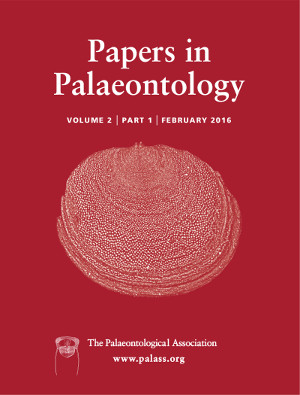Reg. Charity No. 1168330

The family Prionitidae Hyatt represents a major component of ammonoid faunas during the Smithian (Early Triassic), and the genus Anasibirites Mojsisovics is the most emblematic taxon of this family. Its stratigraphical range is restricted to the beginning of the late Smithian (Wasatchites distractus Zone). The genus is also characterized by an unusual cosmopolitan distribution, thus contrasting with most earlier Smithian ammonoid distributions that were typically restricted by latitude. Because the late Smithian witnessed an extinction of the nekton (e.g. ammonoids, conodonts) whose amplitude is equal to or larger than that of the end‐Permian crisis, the number of valid species that should be included in the genus Anasibirites becomes a highly relevant question when addressing this extinction at the highest possible taxonomic resolution. Based on a new extensive collection from Timor, the composition of the genus Anasibirites is herein revised with respect to its intraspecific and ontogenetic variations. Comprehensive morphological and biometric studies (c. 950 measured specimens) indicate that, of the c. 60 available species names, only two are valid, namely A. kingianus (Waagen) and A. multiformis Welter. Continuous ranges of intraspecific variation enable us to synonymize A. nevolini Zakharov, 1968 and A. angulosus (Waagen) with A. kingianus. The contribution of Anasibirites to species diversity during the late Smithian extinction is thus significantly less than previously estimated, therefore accentuating the severity of this event.